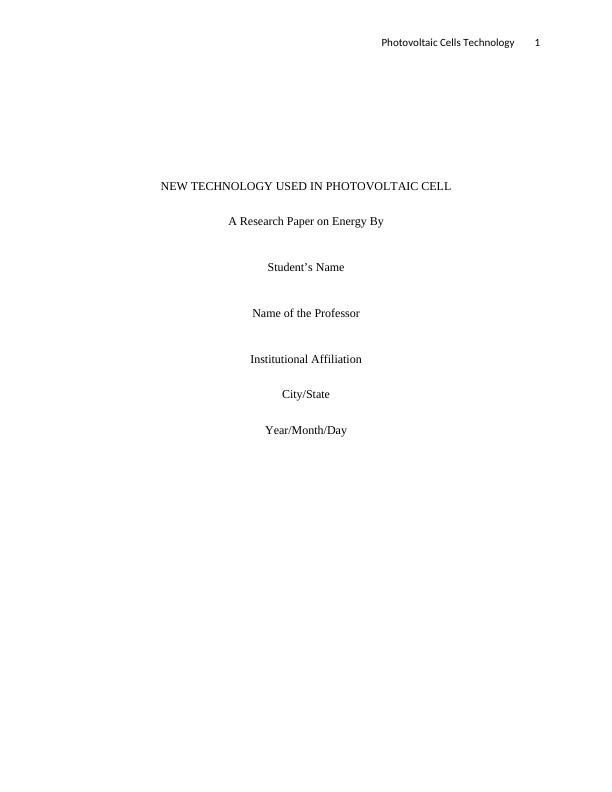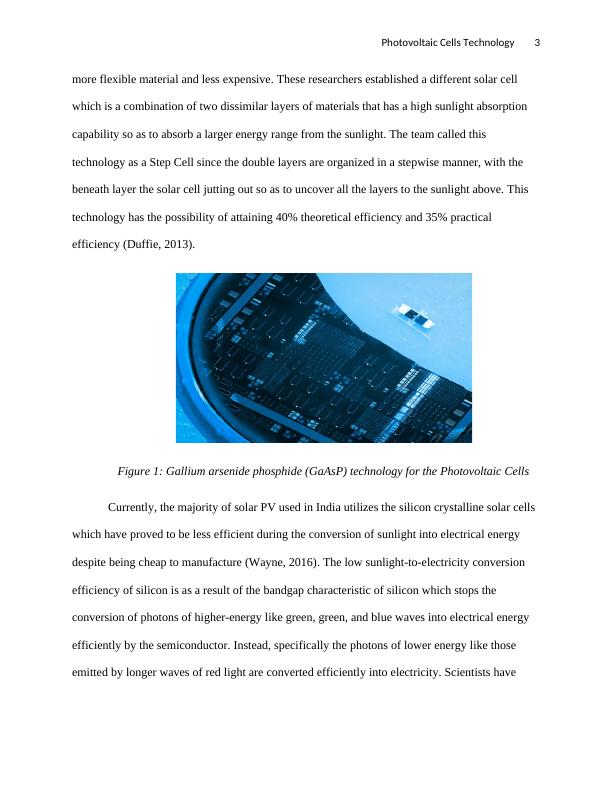New Technology Used in Photovoltaic Cells
7 Pages1708 Words68 Views
Added on 2023-06-07
About This Document
This research paper investigates the new technology used in the photovoltaic cell which can be significant for India in specific. Researchers have investigated on numerous ways in which the cost-effectiveness and efficiency of the solar cell can be improved and some of these technologies can be effectively be used in India so as to attain the targeted solar PV generation capacity.
New Technology Used in Photovoltaic Cells
Added on 2023-06-07
ShareRelated Documents
End of preview
Want to access all the pages? Upload your documents or become a member.
Study on Hybrid System with Photovoltaic and Fuel Cell
|18
|2508
|255
conventional photovoltaics systems Assignment PDF
|18
|3480
|361
Dye Sensitized Solar Cells: History, Principle, and Efficiency Parameters
|6
|1798
|122
Automatic Solar Tracking System: Working Mechanism and Components
|12
|3553
|326
Solar Energy: Photovoltaic Panels (PV)
|12
|2921
|30
Solar Power vs. Wind Power
|4
|679
|100



